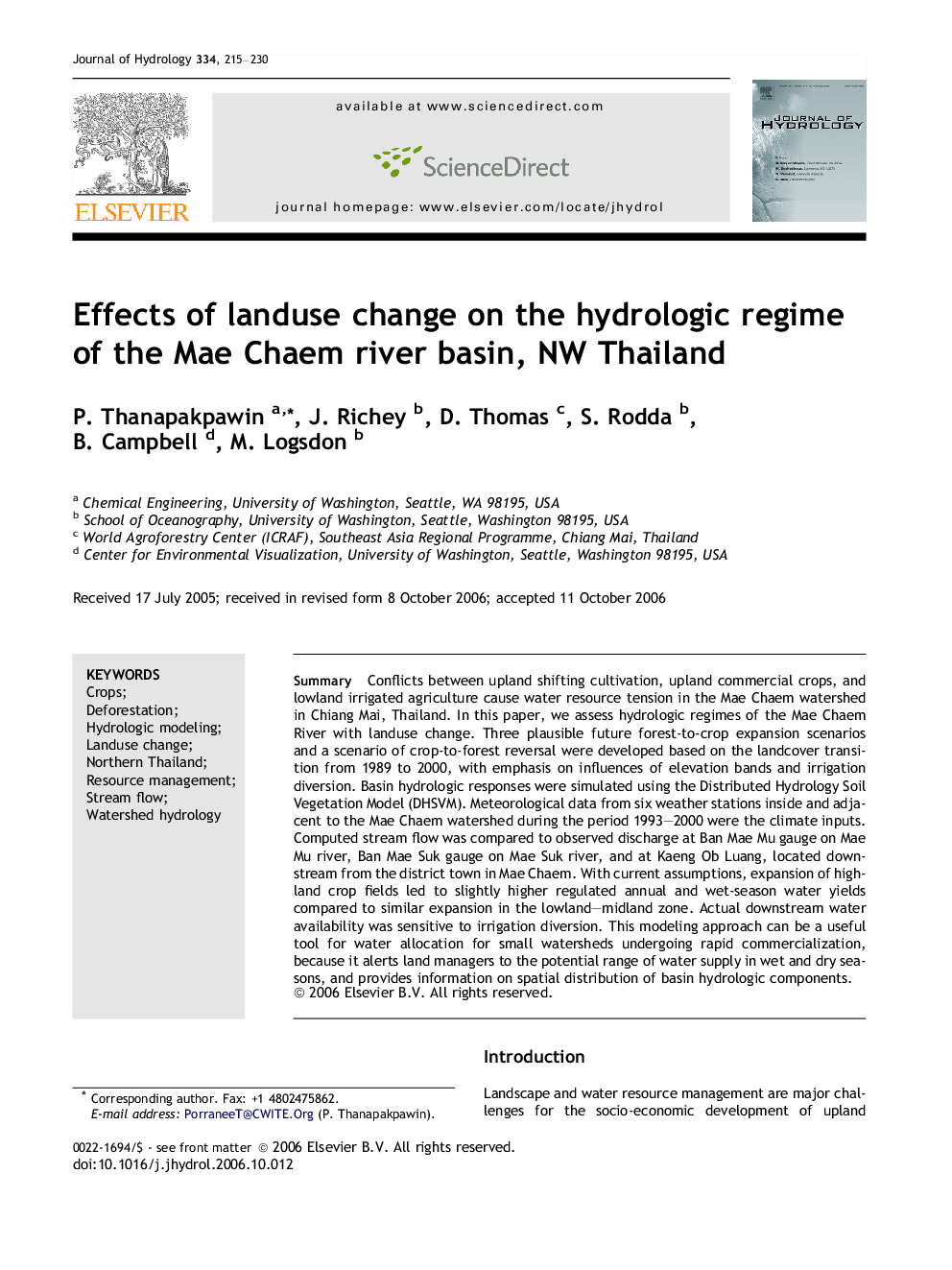| Article ID | Journal | Published Year | Pages | File Type |
|---|---|---|---|---|
| 4579929 | Journal of Hydrology | 2007 | 16 Pages |
SummaryConflicts between upland shifting cultivation, upland commercial crops, and lowland irrigated agriculture cause water resource tension in the Mae Chaem watershed in Chiang Mai, Thailand. In this paper, we assess hydrologic regimes of the Mae Chaem River with landuse change. Three plausible future forest-to-crop expansion scenarios and a scenario of crop-to-forest reversal were developed based on the landcover transition from 1989 to 2000, with emphasis on influences of elevation bands and irrigation diversion. Basin hydrologic responses were simulated using the Distributed Hydrology Soil Vegetation Model (DHSVM). Meteorological data from six weather stations inside and adjacent to the Mae Chaem watershed during the period 1993–2000 were the climate inputs. Computed stream flow was compared to observed discharge at Ban Mae Mu gauge on Mae Mu river, Ban Mae Suk gauge on Mae Suk river, and at Kaeng Ob Luang, located downstream from the district town in Mae Chaem. With current assumptions, expansion of highland crop fields led to slightly higher regulated annual and wet-season water yields compared to similar expansion in the lowland–midland zone. Actual downstream water availability was sensitive to irrigation diversion. This modeling approach can be a useful tool for water allocation for small watersheds undergoing rapid commercialization, because it alerts land managers to the potential range of water supply in wet and dry seasons, and provides information on spatial distribution of basin hydrologic components.
